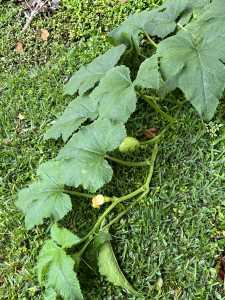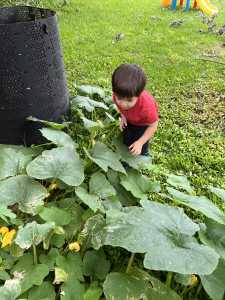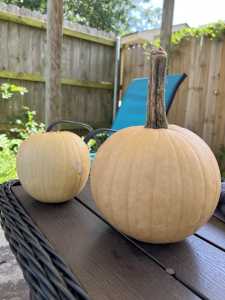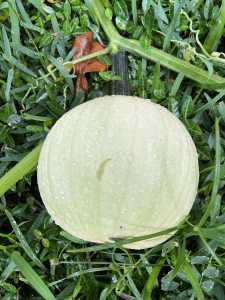I would not describe myself as having a green thumb by any stretch of the imagination. Almost all of my houseplants have died a tragic death, and I can’t say much for my flower garden, either. However, I would say my husband’s gardening thumb has a tinge of green to it! He plots out a small vegetable garden each year, with tomatoes, bell peppers, and most recently, edamame. He also keeps our satsuma and lemon trees watered and pruned. I just enjoy the fruits (and veggies) of his labor.
The Compost Pile
Recently, he’s taken a big interest in composting. Despite not being as well researched in the subject as he is, I dutifully save all our eggshells, vegetable peels, and other compostable scraps, and then we march them out to the big bin in the backyard, where they will eventually turn into nutrient-rich soil for future veggie gardens to come.
Before we had invested in this special composting bin, we would just toss the scraps into a large pile in the backyard. This included tossing last year’s Halloween pumpkins into that pile after the season had come and gone. The pumpkins had been carved but not preserved, so once they started to rot, into the compost pile they went. And I promptly forgot about them.
Fast Forward Four Months…
Fast forward from early November to March of this year, when I noticed the large, broad leaves of a new plant growing out from among the other various weeds in our compost pile. And what’s more, I spied a couple bright yellow flowers. They reminded me of the flowers our zucchini plant once grew before, surprise, it died. It was– you guessed it– a pumpkin plant growing from our composted Halloween pumpkin!
 I immediately started looking up everything I could about how to grow and nurture a pumpkin plant, but ultimately knew that if this plant were going to survive, my best bet would be to try and stay hands-off. But I invited my kids into the learning process. We learned what male versus female flowers looked like, how they are pollinated, what kinds of animals do pollination, and more. I knew producing an actual pumpkin would be unlikely, but I held out hope– and lo and behold, within a couple weeks, I noticed a stem swelling under a flower, indicating a pumpkin was growing!
I immediately started looking up everything I could about how to grow and nurture a pumpkin plant, but ultimately knew that if this plant were going to survive, my best bet would be to try and stay hands-off. But I invited my kids into the learning process. We learned what male versus female flowers looked like, how they are pollinated, what kinds of animals do pollination, and more. I knew producing an actual pumpkin would be unlikely, but I held out hope– and lo and behold, within a couple weeks, I noticed a stem swelling under a flower, indicating a pumpkin was growing!
Pumpkin Obsession
I would go on to become fully obsessed with this pumpkin, all while trying my best not to kill it. I was legitimately shocked at how quickly this pumpkin grew. My kids and I would go out and measure it by the length of our own fingers, then hands, each day. We eventually wound up with two viable pumpkins.

We also wound up with some sort of mildew disease on the leaves. I fretted over what to do– to follow any of the several Internet remedies I found or to leave it alone. I started cutting off infected leaves, hoping to stave off the mildew. I can’t say for sure how well this strategy worked, because neither of my prized pumpkins ever quite achieved the desired orange color. By June, they eventually came off the stem as a pale yellow color and stayed that way. The smaller pumpkin did not survive, but the larger pumpkin did!

Homegrown Decoration
Ultimately, it was a great learning experience for my kids (and for me!). Now, having kept the bigger pumpkin out of the sun for the last couple of months, we’re displaying our very own homegrown pumpkin on our porch for Halloween! Sure, it may not be very big, and sure, it may not be orange, but hey, it’s ours!
If I, a person generally considered hazardous to plants, can manage to accidentally grow my own pumpkin from a composted shell, I guarantee you can, too! If you want to have your own pumpkins for next Halloween, don’t preserve or throw away this year’s pumpkins! Compost them and see what happens!

















